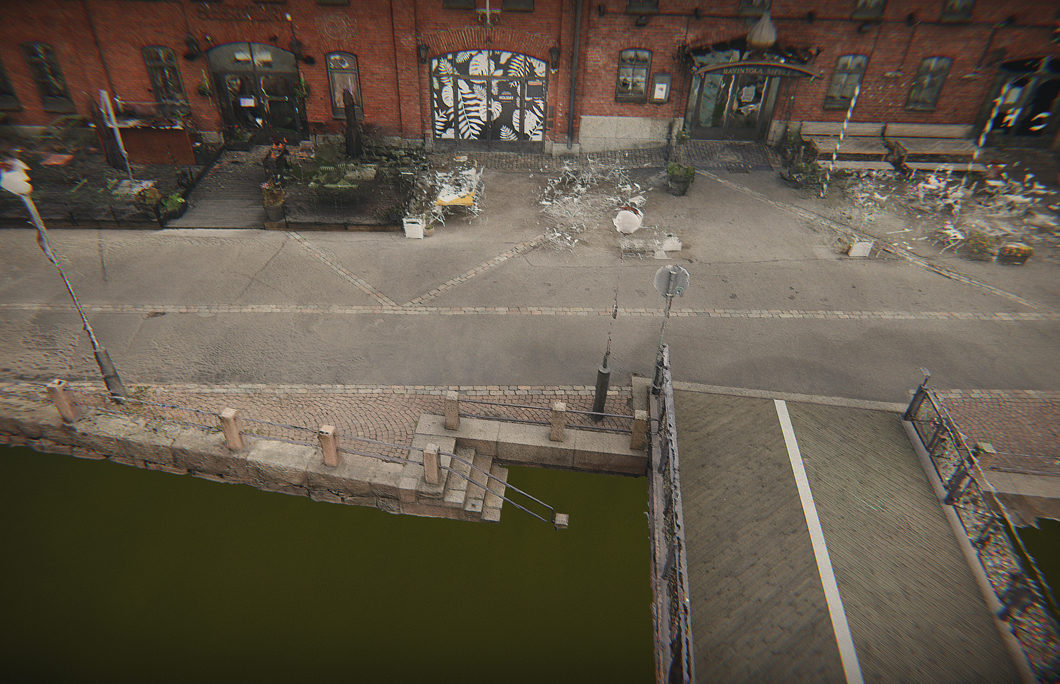In early 2017, we wrote about an ambitious project to create a flexible, detailed, and open 3D model of Helsinki. In June of this year, Finnish company Umbra announced that it was partnering with Helsinki to create a textured photogrammetric mesh of the city, and even stream the model in real-time to browsers, mobile devices, and AR and VR headsets around the world using its own enterprise Composit platform.
Why write about this now? Umbra has just announced an upgrade to the Composit platform that will further automate the optimization of 3D data—even huge sets—and enable users to store super-high resolution data on the cloud and stream it to connected AR, VR, and even mobile devices. The update should appeal to enterprise users, but also serves a much more ambitious purpose: Umbra wants to enable an open, crowd-sourced, super-high resolution 3D model of the entire planet.
What kind of resolution are we talking about?
Umbra told SPAR3D this update to the Composit platform allows users to share and stream data at a resolution 1,000 times higher than other existing 3D data platform. That’s enough so that users could see “every blade of grass and every grain of sand in perfect detail,” the company says.
That claim may seem incredible in the most literal sense of the word, but Umbra has a strong pedigree to lean on. The company has developed its 3D technology over 15 years while working with top-tier video game studios such as the creators of Fallout, Call of Duty, and The Witcher. They have also spent a number of years working with large AEC firms to develop the Composit platform, which means the company has shown the technology to be effective for processing 3D data sets dozens of terabytes large, and delivering them to mobile devices, headsets, and the Unity Game Engine “in photo-realistic resolutions” and at video-game frame rates. Of course, if you’re curious, the data should speak for itself.
If you ever use photogrammetric models alongside your design models, the value of such a platform should be clear. Umbra says the super high res 3D data stored on their service integrates neatly with architectural and BIM models. That means you can generate extremely realistic visualizations of potential and ongoing building projects.

Umbra’s improved 3D mesh data compared to other mesh data.
Crowdsourcing an open 3D model of the world
The more exciting part, however, is that Umbra plans to use this technology to facilitate the creation and storage of an open, super high-res 3D map of the whole world.
To do this the company is investing in R&D to make its processing and streaming technology available to consumer markets, with an eye toward supporting crowd-sourced data uploads from a variety of sources. For instance, Umbra tells SPAR, users might one day upload 3D data using mobile phone cameras or drones, and the system may even support data gathered by the autonomous vehicles sure to be roaming the world in the coming years.
Founder Otso Makinen says that in the first stage of this project any public data will be verified by employees. Later stages will see Umbra “adding features for making this work at a crowd-sourcing scale—geo-referenced uploads that are easy to moderate and are automatically linked to a world map—and possible revenue sharing when businesses stream data that you have uploaded.”
Crucially, Umbra says it will not own the data the way that many 3D platforms do. This model will “allow everyone to have control of their own data, creating an entirely new ecosystem around capturing and distributing 3D content.” It will also “enable better data security and a much more democratic world or 3D content compared to current, gigantic data monopolies and the problems they bring.”
Umbra summarizes the vision as freeing users from dependence on companies like Google, Apple, and others for 3D content. Users, they tell me, will “soon have the ability to scan their own 3D content whenever they want, keeping the virtual 3D copy of the world up to date.”
For more information, see Umbra’s website.





